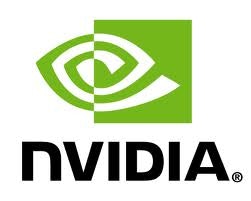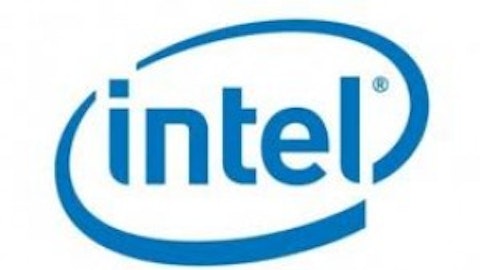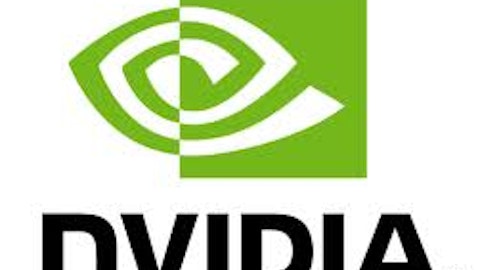Although corporate makeovers are frequent on Wall Street, they tend to attract quite a bit of skepticism. International Business Machines Corp. (NYSE:IBM) comes to mind. Despite the company’s solid management team, Big Blue had a hard time convincing the Street that it could turn into service-oriented enterprise. Very few believed IBM would be successful until it was. NVIDIA Corporation (NASDAQ:NVDA), which is known for its high-end PC graphics chips, is now fighting this same battle. PCs (of course) are dying and the Street believes NVIDIA is too far behind the likes of QUALCOMM, Inc. (NASDAQ:QCOM) in mobile devices to mount a recovery. But NVIDIA’s efforts suggest otherwise. And if investors continue to buy into the noise, they’ll be kicking themselves for quarters to come.

Revenue surged 16% to $1.11 billion, or 8% higher than the company’s prior guidance of $1.02 billion. However, operating expenses grew 9.3%. Ordinarily this would be a concern. Then again, net income grew 50% year over year. Even on a non-GAAP basis it advanced 36%. So it’s hard to find fault in a slight uptick in expenses. Plus, this is a company that is fighting to make inroads in new mobile markets, while at the same time, trying to preserve its legacy GPU business. These efforts are going to cost money. To that end, it’s been working.
Revenue from graphics processing units, or GPUs, advanced 2% year over year, while GPU revenue excluding chipsets soared 8%. Gross margin widened 1.5% to 52.9%. Clearly, the management team knows what it is doing. It’s disappointing that the Street still won’t buy in. But I suppose the company’s soft Q1 guidance had a bit to do with that. But it’s not as if rivals — or much of the tech sector, really — has been blinding the Street with shiny outlooks.
Nevertheless, this is a company that is trying to reverse pessimism. In-line guidance is seldom enough. NVIDIA projects first-quarter revenue to arrive at roughly $940 million, below Street estimates of $1.07 billion. Karen Burns, the company’s interim CFO, seems to be bracing for a much softer quarter that analysts would have liked. NVIDIA said GPU sales will be down in Q1. But I don’t think this is some shocking revelation. What’s shocking was the Street’s reaction, since this is the same guidance that’s been provided by Intel Corporation (NASDAQ:INTC) and Advanced Micro Devices, Inc. (NYSE:AMD).
However, this should not be mistaken for a timid company or one that is unsure of where it’s going. Pessimism or not, NVIDIA CEO Jen-Hsun Huang said, “My expectation is that we’ll gain market share this year or we’ll continue to gain market share this year.” If that doesn’t get your blood going, I don’t know what will. Although Huang was speaking to analysts and those that still doubt his company’s transition efforts, he was also making a declaration to Qualcomm, which just issued its typical “beat-and-raise” quarter.
However, Qualcomm may have underestimated what sent NVIDIA research and development expenses up 10% in the quarter. On Tuesday, NVIDIA revealed its newest chip, the Tegra 4i, which is the company’s first fully integrated 4G LTE mobile processor. And according to NVIDIA, it is faster yet half the size of its nearest competitor. That’s NVIDIA throwing shade at the Snapdragon S4, which is Qualcomm’s system-on-chip, and is the most widely used of its kind on the market today.
NVIDIA is talking a big game. But it’s not as if Qualcomm has been a diplomat, either. The company’s marketing department has made its own claims about how fast Snapdragon is in various modes and capacities. Although both companies are careful to not mention specific names, it clear in the spec language that they know who their rivals are. For now, it’s early in the game and Qualcomm still deserves its respect as the leader — but for how long? At the very least, NVIDIA is now making it interesting.
How can these shares still be down 16% over the past six months? Investors would be wise to wake up. This is a company that is pushing all the right buttons and (in my opinion) saying all the right things. For a semiconductor company, I appreciate that management now operates with a chip on its shoulder.
The article Why NVIDIA Has a Chip on Its Shoulder originally appeared on Fool.com and is written by Richard Saintvilus.
Fool contributor Richard Saintvilus has no position in any stocks mentioned. The Motley Fool recommends Intel and NVIDIA. The Motley Fool owns shares of Intel, International Business Machines (NYSE:IBM)., and Qualcomm.
Copyright © 1995 – 2013 The Motley Fool, LLC. All rights reserved. The Motley Fool has a disclosure policy.




